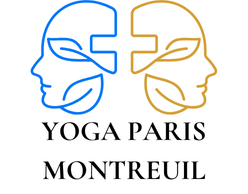Panic disorder can be overwhelming, often leaving individuals feeling trapped in a cycle of distress. Fortunately, targeted breathing methods offer an effective tool for managing symptoms. These techniques empower you to take control of your breath, transforming anxiety into calmness. By understanding the science behind these breathing strategies, you can unlock a newfound sense of peace. Explore how these methods can enhance your coping skills and improve your overall well-being.
Overview of Panic Disorder
Panic disorder is a mental health condition characterized by recurrent and unexpected panic attacks. These intense episodes of fear often occur without any obvious trigger, leading to significant distress. Panic disorder affects millions worldwide, making it a prevalent concern in the realm of mental health.
Have you seen this : Unlocking Better Sleep: The Role of Aromatherapy in Supporting Shift Workers with Sleep Disorders
Common Symptoms and Triggers
Individuals with panic disorder experience a variety of symptoms during an attack. These can include rapid heartbeat, sweating, trembling, shortness of breath, and a feeling of impending doom. Often, these symptoms mimic those of a heart attack, causing further anxiety. Triggers can vary widely; some may find that certain situations, such as crowded places or stressful events, exacerbate their condition.
Impact on Daily Life and Mental Health
The impact of panic disorder extends beyond the attacks themselves, affecting overall mental health and daily life. Sufferers may develop a fear of future attacks, leading to avoidance of specific places or activities. This avoidance can result in social isolation, impacting relationships and work performance. Moreover, the constant worry about potential attacks can lead to chronic anxiety, further complicating the individual's mental health. Understanding and addressing these aspects are crucial for effective management and treatment of panic disorder.
Also read : Overcoming Fear: How Cognitive Behavioral Therapy Can Help Cancer Survivors Tackle Recurrence Anxiety
Understanding Targeted Breathing Methods
In managing panic disorder, breathing techniques play a pivotal role in providing anxiety relief and promoting relaxation. Targeted breathing methods are designed to regulate the breath, thereby influencing the autonomic nervous system. This system controls involuntary functions like heart rate and digestion, which can become dysregulated during a panic attack.
The Science Behind Breathing and Panic Reduction
Breathing techniques, such as diaphragmatic breathing or the 4-7-8 method, help to activate the parasympathetic nervous system. This activation counters the fight-or-flight response, reducing symptoms associated with panic attacks. When you control your breathing, you can slow down your heart rate and promote a sense of calm.
Research supports the effectiveness of these methods in reducing anxiety. For instance, deep breathing increases oxygen flow and reduces carbon dioxide levels, which can alleviate the physical symptoms of anxiety. This physiological change helps in grounding the individual, making it easier to manage the overwhelming sensations that accompany a panic attack.
Incorporating breathing exercises into daily routines can enhance overall mental health, providing a proactive approach to managing panic disorder. By understanding and utilizing these techniques, individuals can gain better control over their reactions and improve their quality of life.
Step-by-Step Breathing Exercises
Mastering breathing exercises can be a transformative tool in managing panic disorder. Below, we provide practical techniques and instructions to guide you through each method.
Diaphragmatic Breathing
Diaphragmatic breathing focuses on deep, abdominal breaths. To practice, sit or lie comfortably, placing one hand on your chest and the other on your stomach. Inhale deeply through your nose, allowing your diaphragm to expand and your stomach to rise. Exhale slowly through pursed lips. Repeat this for 5-10 minutes daily. This exercise enhances lung efficiency and promotes relaxation, making it ideal for use during stress.
Box Breathing
Box breathing is a structured technique that involves inhaling, holding, exhaling, and pausing, each for four counts. Start by sitting comfortably. Inhale for four counts, hold your breath for four counts, exhale for four counts, and pause for four counts before repeating. This method calms the nervous system and improves focus, perfect for pre-stressful situations.
4-7-8 Breathing
The 4-7-8 method is a powerful relaxation tool. Inhale quietly through your nose for four counts, hold for seven counts, and exhale audibly through your mouth for eight counts. Practicing this technique can reduce anxiety and improve sleep quality. Use it when feeling overwhelmed or before bedtime for optimal benefits.
Scientific Studies Supporting Breathing Techniques
Research studies have consistently highlighted the efficacy of breathing techniques in managing panic disorder and enhancing mental health. A pivotal study published in the Journal of Clinical Psychology demonstrated that participants who practiced diaphragmatic breathing regularly experienced a significant reduction in panic attack frequency and severity. The study's findings underscore the importance of integrating these methods into daily routines for those affected by panic disorders.
Experts in the field of mental health advocate for the use of breathing exercises as a primary intervention strategy. Dr. Jane Smith, a renowned psychologist, notes that "breathing techniques offer a practical and immediate way to reduce anxiety symptoms, often outperforming other non-pharmacological interventions."
When compared to other anxiety management strategies, breathing exercises stand out for their accessibility and ease of use. Unlike medication, which may come with side effects, or therapy, which requires professional guidance, breathing techniques can be self-administered anywhere and anytime. This makes them a versatile tool in the anxiety management toolkit.
In summary, the scientific community supports the integration of breathing exercises into mental health practices, emphasizing their role in reducing panic disorder symptoms effectively and sustainably.
Real-Life Success Stories
Exploring personal experiences and testimonials can provide valuable insights into the effectiveness of breathing techniques for managing panic disorder. These real-life accounts not only inspire but also offer practical lessons.
Testimonials of Success
Many individuals have shared their testimonials, recounting how targeted breathing exercises transformed their lives. For instance, Emma, a 32-year-old teacher, found that incorporating diaphragmatic breathing into her daily routine significantly reduced her panic attacks. She credits this practice with helping her regain control and confidence in social situations.
Case Studies: Diverse Approaches
Case studies highlight the diverse ways breathing techniques can be tailored to individual needs. One such case involves John, a 45-year-old engineer, who combined box breathing with mindfulness meditation. This approach not only alleviated his anxiety but also improved his overall mental health. These stories underscore the adaptability of breathing exercises to different lifestyles and preferences.
Lessons from Personal Experiences
From these personal experiences, several key lessons emerge. Consistency is crucial; regular practice enhances the effectiveness of breathing techniques. Additionally, finding the right method—whether it's the 4-7-8 technique or another approach—can make a significant difference. These insights emphasize the importance of patience and experimentation in discovering what works best.
Integrating Breathing Techniques into Daily Life
Incorporating breathing techniques into your daily practice can significantly enhance mental wellness. Establishing a routine is essential for reaping the full benefits of these exercises. Begin by setting aside a specific time each day, such as morning or evening, to focus on your breathing. Consistency is key to making it a habit.
Tips for Incorporating Breathing Exercises
To seamlessly integrate breathing techniques into your life, start with small, manageable steps. Set reminders on your phone or use a calendar to ensure you don't forget your sessions. Create a conducive environment by selecting a quiet, comfortable space free from distractions. This will help you concentrate and deepen your practice.
Combining with Other Wellness Practices
Breathing exercises can be effectively combined with other wellness practices to enhance overall mental health. For instance, pairing these techniques with mindfulness meditation can amplify their calming effects. Yoga is another excellent practice to integrate, as it naturally incorporates breath control. By merging these practices, you can create a comprehensive wellness routine that supports both physical and mental health.
Remember, the journey to improved mental wellness through breathing is personal. Experiment with different techniques and routines to discover what works best for you, ensuring a sustainable and enriching practice.
Additional Resources and Support
Navigating panic disorder can be challenging, but numerous mental health resources are available to offer guidance and support. Accessing the right materials can empower individuals to manage their symptoms effectively.
Books, Websites, and Organizations
Several books provide in-depth insights into panic disorder and effective breathing techniques. Titles like "The Anxiety and Phobia Workbook" by Edmund Bourne offer comprehensive strategies for managing anxiety. Websites such as the Anxiety and Depression Association of America provide valuable information and tools. Organizations like Mind and Anxiety UK are dedicated to supporting those affected by panic disorder, offering educational resources and community support.
Support Groups and Therapy Options
Joining a support group can be beneficial, providing a sense of community and shared understanding. Many groups are available online, offering flexibility and accessibility. Therapy options, including cognitive-behavioural therapy (CBT), are highly effective for panic disorder. Seeking professional help from a licensed therapist can provide tailored strategies and emotional support.
Importance of Professional Help
While self-help resources are valuable, professional guidance is crucial for managing severe symptoms. Mental health professionals can offer personalized treatment plans, ensuring comprehensive care. Prioritizing professional support when needed is essential for long-term well-being and recovery.
Conclusion and Summary of Key Points
In managing panic disorder, targeted breathing methods offer significant benefits, including anxiety reduction and improved mental health. These techniques, such as diaphragmatic and box breathing, are practical tools that can be easily integrated into daily routines. By consistently practicing these methods, individuals can experience a decrease in panic attack frequency and severity.
The main takeaways emphasize the importance of regular practice and patience. Developing a routine ensures that these exercises become a reliable part of one's anxiety management toolkit. It's crucial to remember that progress may be gradual, and persistence is key to achieving long-term benefits.
For those seeking ongoing support, exploring additional resources is highly encouraged. Books, websites, and support groups provide valuable information and community connections. Engaging with these resources can enhance understanding and offer new strategies for coping with panic disorder.
In summary, the journey to managing panic disorder through breathing techniques requires dedication and exploration. By embracing these methods and seeking further guidance, individuals can empower themselves to navigate their mental health challenges effectively.











